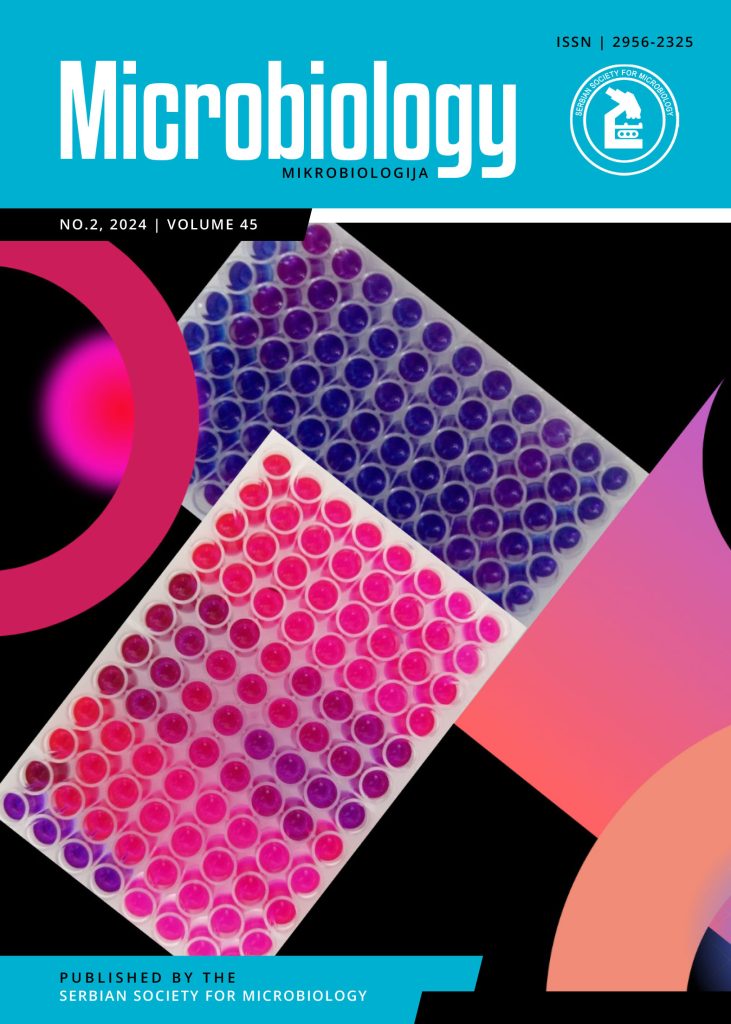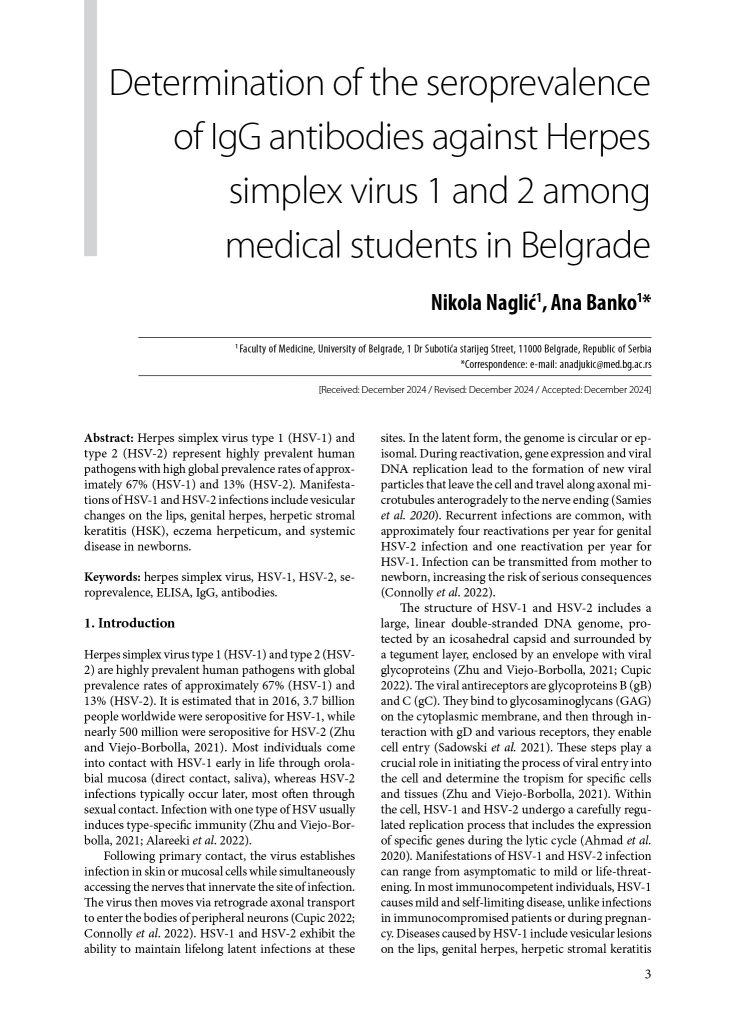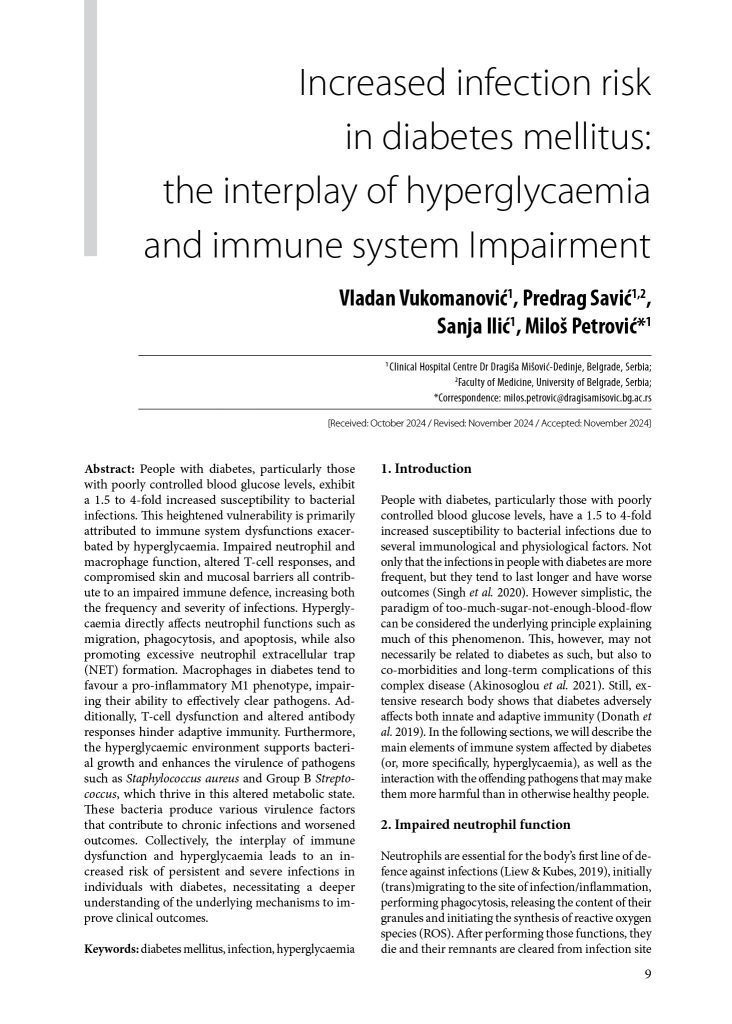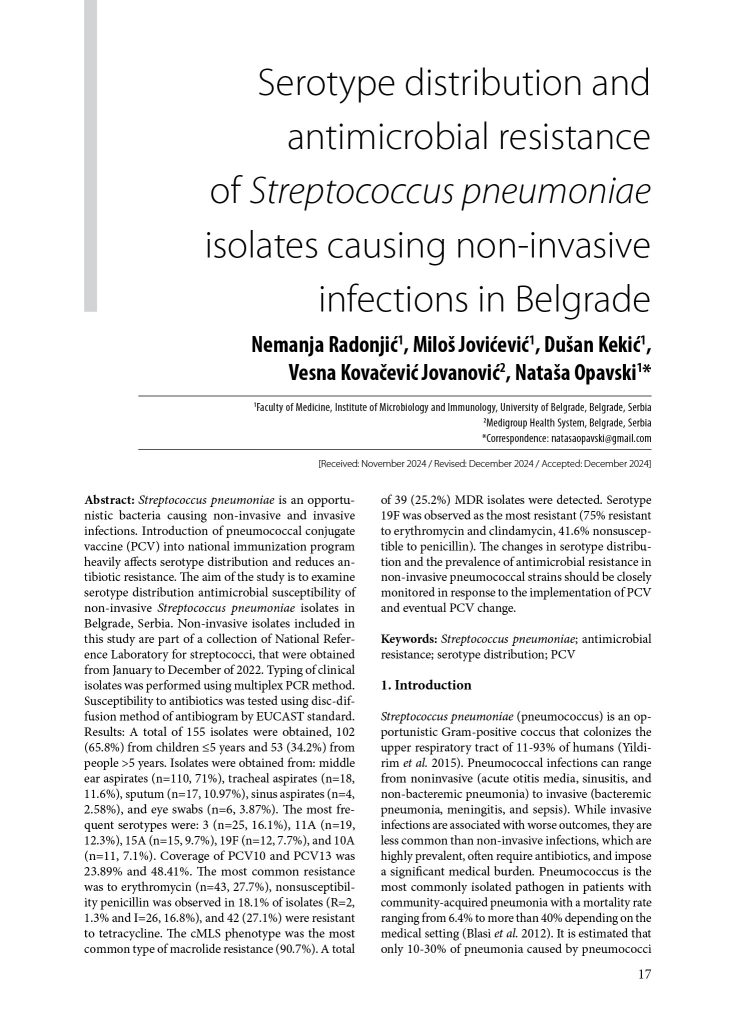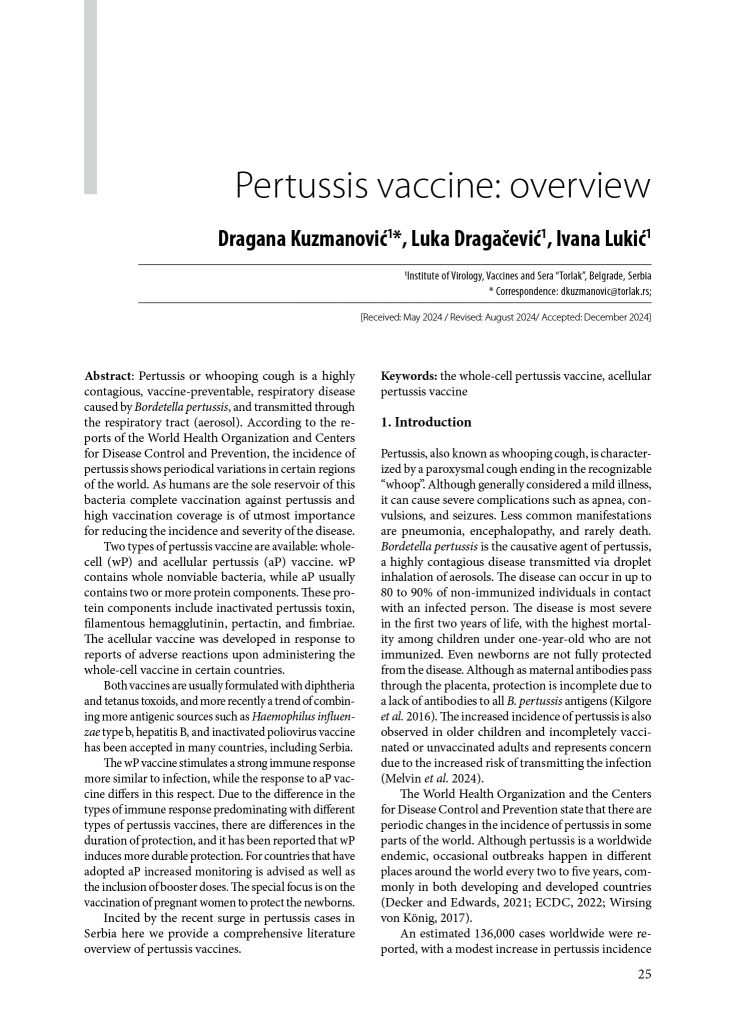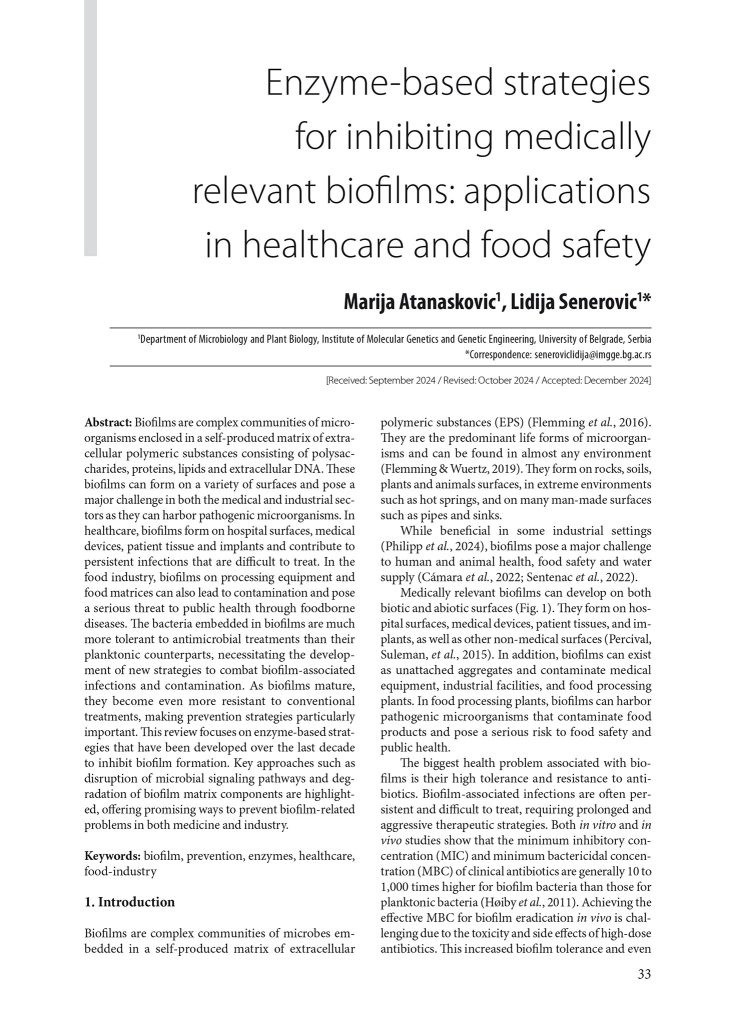I am pleased to present Volume 45 of the Journal MICROBIOLOGY (MIKROBIOLOGIJA), published by the Serbian Society for Microbiology....
Nikola Naglić1, Ana Banko1*
Herpes simplex virus type 1 (HSV-1) and type 2 (HSV-2) represent highly prevalent human pathogens with high global prevalence rates of approximately 67% (HSV-1) and 13% (HSV-2). Manifestations of HSV-1 and HSV-2 infections include vesicular...
Vladan Vukomanović1, Predrag Savić1,2, Sanja Ilić1, Miloš Petrović*1
People with diabetes, particularly those with poorly controlled blood glucose levels, exhibit a 1.5 to 4-fold increased susceptibility to bacterial infections. This heightened vulnerability is primarily attributed to immune system dysfunctions exacerbated by hyperglycaemia. Impaired...
Nemanja Radonjić1, Miloš Jovićević1, Dušan Kekić1, Vesna Kovačević Jovanović2, Nataša Opavski1*
Streptococcus pneumoniae is an opportunistic bacteria causing non-invasive and invasive infections. Introduction of pneumococcal conjugate vaccine (PCV) into national immunization program heavily affects serotype distribution and reduces antibiotic resistance. The aim of the study is...
Dragana Kuzmanović1*, Luka Dragačević1, Ivana Lukić1
Pertussis or whooping cough is a highly contagious, vaccine-preventable, respiratory disease caused by Bordetella pertussis, and transmitted through the respiratory tract (aerosol). According to the reports of the World Health Organization and Centers for Disease...
Marija Atanaskovic1, Lidija Senerovic1*
Biofilms are complex communities of microorganisms enclosed in a self-produced matrix of extracellular polymeric substances consisting of polysaccharides, proteins, lipids and extracellular DNA. These biofilms can form on a variety of surfaces and pose a...

